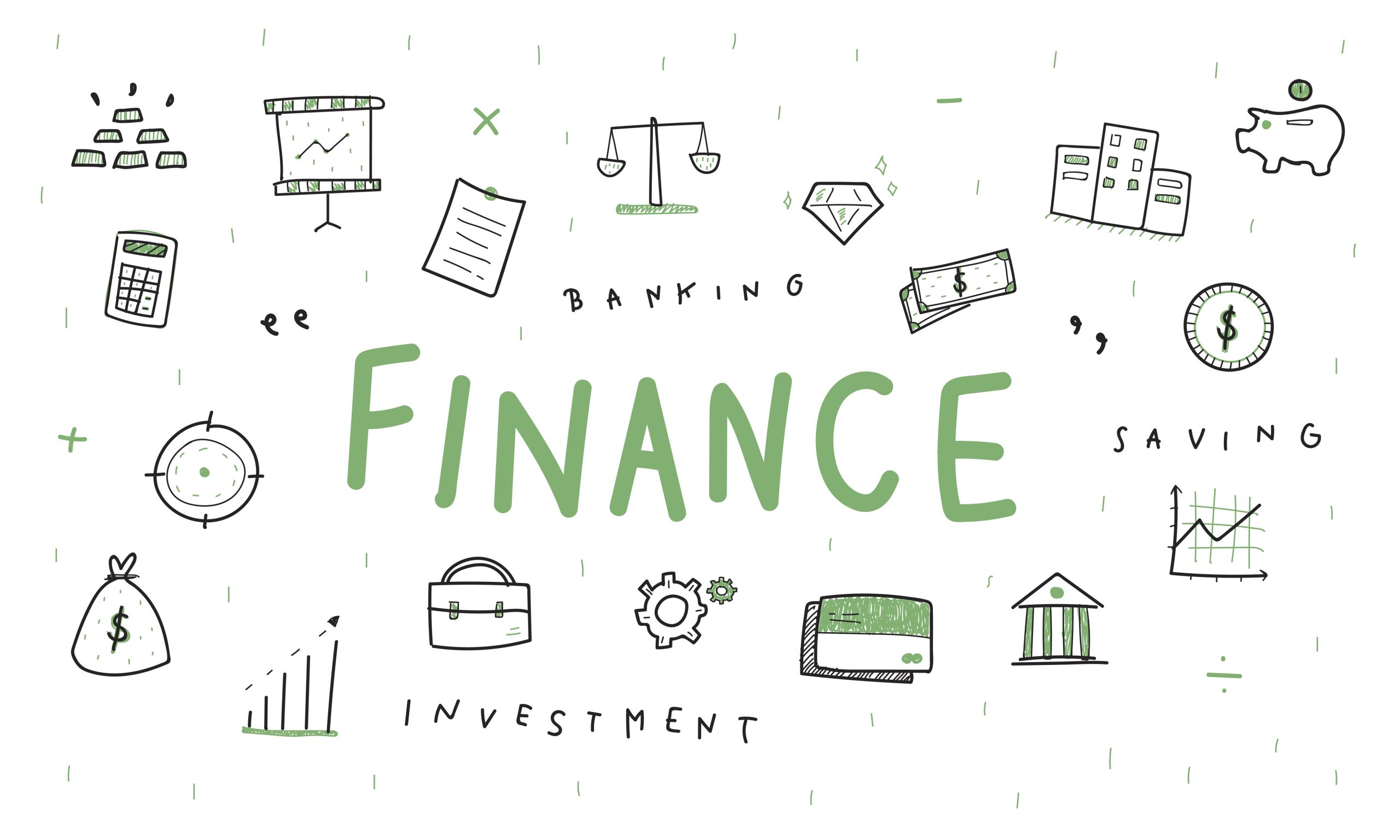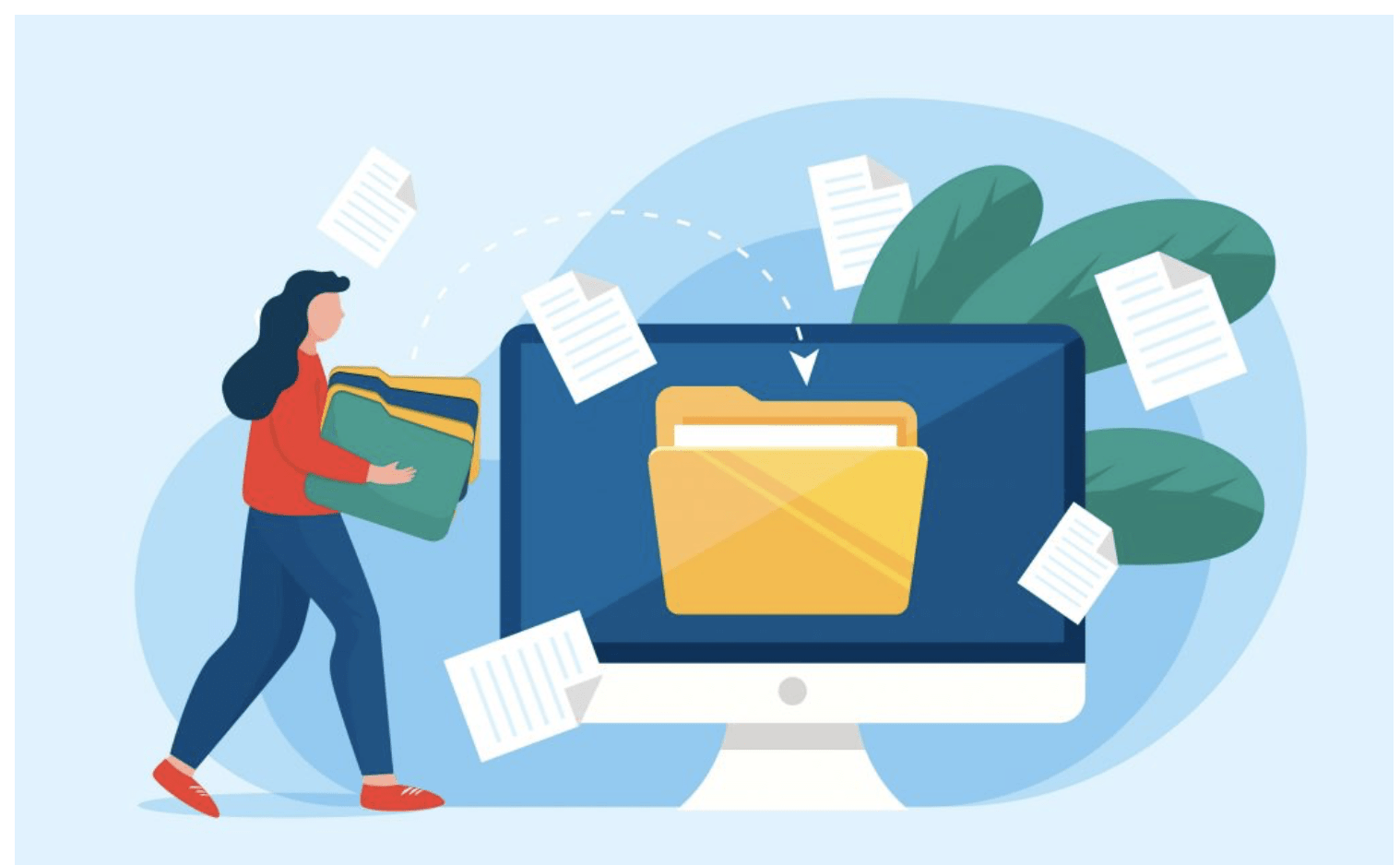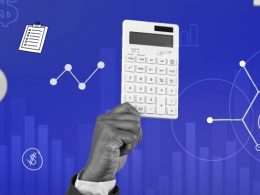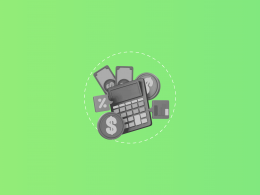When starting a new venture, any small business owner needs to quickly learn many aspects of business management. You essentially become a jack of all trades – from sales, through customer care all the way to marketing.
But the most important aspect of any business is accounting. All small business owners need to be familiar with basic accounting and bookkeeping, as it gives them a clear picture of the state of their finances, allows them to make informed business decisions, and lets them react to any adverse changes faster.
So let’s take a look at how to do basic business accounting, understand what your books tell you, and how to manage them efficiently with helpful software.
Contents:
1. Small business accounting basics
- What is bookkeeping?
- What is accounting?
- Bookkeeping vs. Accounting
- Basic terms for small business accounting and bookkeeping
2. Create your bank business account
3. Choose your accounting and bookkeeping methods
- Cash basis accounting vs. accrual basis accounting
- Single-entry bookkeeping vs. double-entry bookkeeping
4. Set up accounts for recording transactions
5. Record transactions in accounting books
6. Choose your business accounting software
7. Generate financial statements
8. Tax preparation in everyday accounting
9. Reconcile and close your books
Small business accounting basics
Small business owners need to get a working grasp of basic bookkeeping and accounting. More so even than owners of large companies since they can’t usually delegate all that work to business accounting professionals simply due to the accounting costs. That’s why understanding the essential principles and terms in accounting is so important for them.
By understanding how to properly set up a small business accounting system, you can do it more accurately from the start. It can prevent many issues that small businesses face, such as poor cash flow management, mixing personal and business finances, or reporting wrong data to the IRS (which can cost you a lot).
So let’s take it step by step and answer the most basic questions first.
What is bookkeeping?
Bookkeeping is the first tier of the process that your small business financial transactions go through. It’s mostly based on accurately recording all the financial transactions in your books, hence bookkeeping. You can think of it as the general financial administration of your business. The professionals that record those transactions are called bookkeepers.
What is accounting?
Accounting for a small business usually means summarizing and analyzing financial transactions, producing accounting reports, and timely providing data for tax purposes and tax returns. The professionals that perform those various analyses on the financial data are called accountants, or after certification, Certified Public Accountants (CPAs).
Bookkeeping vs. Accounting
To make the distinction even clearer, let’s use an example of a restaurant. A bookkeeper is like a person who’ll make sure all ingredients are fresh and ready to be used, taking in stock, and making half-products, while an accountant is similar to a chef who’ll create meals out of those ingredients and pre-made products.
In reality, the duties of bookkeepers and accountants can sometimes overlap but the above descriptions and example provide a good working distinction.
As you’ve probably noticed, when running your own business, you’ll be tasked more with basic bookkeeping than advanced accounting.
Running a restaurant business or serving one? Check out how Synder’s Daily Summary feature can streamline restaurant bookkeeping.
Basic terms for small business accounting and bookkeeping
There are three major reports, also called financial statements, a business needs to create during a year – a cash flow statement, an income statement, and a balance sheet.
They give a summary of financial operations, cash flows, and the overall financial performance of a business for a specific date or time period.
An accounting period is a set tracking period for accounting performance within which records are gathered and analyzed. It can be either a calendar or fiscal year, but also a month, or quarter.
As you’ll read in a moment, the same accounting or bookkeeping term can have multiple names. But don’t be discouraged, as long as you stick to one of them, that’s ok. So let’s look at how those terms are defined.
Cash flow statement
A cash flow statement, as the name suggests, gives a report on the movement of money (and cash equivalents too) from and to your company during a specific period of time.
There are certain sources from which the cash flow statement is made. However, from the standpoint of small business accounting, only the operating activities are usually applied. Here you’ll use data from sales receipts, payments made to the supplier, rent payments, income tax payments, and many other operating activities.
With cash flow statements, cash basis accounting is used, meaning the money flow is recorded when it leaves or enters your business accounts and not when the billing, invoice, receipt, or other action is triggered.
Find out the difference between direct and indirect cash flow.
Income statement
We’ll start by presenting the many names of the income statement: the statement of operations, profit and loss statement, and statement of earnings. All of them mean the same thing.
It looks at 4 values: revenues, expenses, gains, and losses in order to arrive at a net value, where you subtract the company’s expenses and losses from revenues and gains.
An income statement is produced over a specific period of time, usually quarterly or yearly. Larger companies tend to use the accrual basis of accounting, meaning that revenues and expenses are recorded at the time of the transaction (when you get a bill or raise an invoice), not at the time when the payments are made.
However, for small businesses, the general advice is to use cash basis accounting, since it’s usually simpler to navigate.
Find out what the difference between net profit and revenue is.
Balance sheet statement
The final financial statement is the balance sheet statement. It’s a bigger-picture type of report that gives you a bird’s eye view of how well your business is doing. It’s also known as a statement of financial position or statement of net worth.
The balance sheet shows the overall health of your business, as it takes into account assets, liabilities, and shareholder equities (for small business owners that’s usually the owner’s investment).
It looks at the balance or the ratio between those 3 elements – how what you now own relates to what you invested and what you owe at a specific point in time.
This report is produced mostly yearly. It’s necessary for a small business when applying for loans or investments, but also crucial for your own knowledge and understanding of your business.
1. Create your bank business account

Now that we have the accounting basics covered, let’s look at the next step – opening up a business bank account. The first and one of the most important elements of running a small business is setting up a business bank account.
Surprisingly, some small and medium businesses as well as many self-contractors, especially at the early stages, often ignore this step, preferring to process business transactions through their personal bank accounts.
Though this approach can initially reduce bank processing fees, it can cause significant losses and problems in the future, including the wrong classification of your business, incorrect tax filing, or missed deductions. If you add personal loans, insurance, and credit cards to the mix, it becomes very hard to tease out your personal life financials from your business ones.
So opening a separate business bank account is a must. And here’s a simple step-by-step guide you can use as a checklist.
2. Choose your accounting and bookkeeping methods
The next step is to decide how you’re going to track your business income and expenses. In other words, you need to choose the accounting method that’ll fit your business needs.
Cash basis accounting vs. accrual basis accounting
We spoke about cash basis and accrual basis accounting when discussing 3 main financial statements. So let’s look into it further.
Cash based method records the actual inflow or outflow of money from your accounts, while the accrual method anticipates revenue and expenses. For large businesses, where the time between invoicing and payment can be substantial, so can the transaction amount, it makes sense to use accrual accounting as it gives an accurate overview of the company’s financial situation.
However, for small businesses, the cash based method of accounting is more commonly used as it’s more straightforward and simpler to execute.
Single-entry bookkeeping vs. double-entry bookkeeping
The single-entry method suggests entering each transaction only once. For example, upon a sale, you record the sum of the purchase in your account. It’s a rather simple method of bookkeeping that doesn’t provide for your inventory, for example.
The double-entry method is more sophisticated and gives you a clearer view of your finances. It implies recording two entries for each transaction: a debit and a credit, thus keeping your books balanced. The method allows for faster errors and fraud detection, better identification of profit and loss, and easier creation of financial statements.
For small businesses aiming at more accurate accounting, a double-entry method is a better choice. If you think that means double work, don’t worry, with the right software, you don’t actually need to physically input transactions into two separate accounts, as the software does everything for you.
Learn more about accounting for a retail store.
3. Set up accounts for recording transactions

In accounting, the word “account” doesn’t mean your bank account but stands for certain types of financial transactions that include sales, payroll, and many more.
The concept behind various accounts helps differentiate various types of transactions to help track your income and expenses more efficiently. There are 5 major types of accounts and they comprise assets, liabilities, income, expenses, and equity.
- The assets account includes the data about cash and resources that belong to a business. It comprises cash, accounts receivable, equipment, inventory, supplies, real estate, etc.
- The liabilities account comprises all the obligations or debts that a business might have, such as interest payable, loans, mortgage, etc.
- The income account stands for business earnings – the cash a business gets through selling its products or services, including sales income, rental income, interest income, etc.
- The expenses account gathers all the outcoming business transactions – the money that the business pays for various resources and services, such as utilities, supply expenses, insurance, salaries, paid interests, etc.
- The equity account shows what remains after liabilities are subtracted from assets. It represents the owner’s held interest in the business, which can be the owner’s capital, dividends, retained earnings, etc.
All your business transactions, depending on their type, will be allocated to these accounts. And the collection of those accounts is called the chart of accounts.
Learn more about payroll management software and how it can help your business.
4. Record transactions in accounting books
If you’re using a single entry method, you record your income and expenses in a cash register. But if you use a double entry method, all your transactions are made as journal entries that are subsequently summarized in a general ledger.
All business accounts are recorded in your accounting books. Of course, accounting books aren’t real books, as they used to be back in the day. They’re rather a means of keeping and tracking your accounting records.
Typically, businesses use the following methods of keeping records: paper documents, spreadsheets, and accounting software.

Paper accounting
The paper accounting method, thankfully, is becoming a thing of the past for small businesses, and for a good reason. No matter how few accounting activities a business has, paper accounting is error-prone, and the risk of losing the transaction data is very high.
Time-consuming manual data entry and subsequent calculations, as well as misplacement of documents, are the biggest drawbacks of paper accounting.
Spreadsheet software
Spreadsheet software is a means of keeping your accounting data in electronic tables, such as MS Excel or Google Spreadsheets. You can record, correct, and safely keep your accounting data on the computer, as well as share them with an accountant when needed, since both types of spreadsheets provide sharing and multi-user options.
When it comes to the bookkeeping basics, one of the biggest drawbacks of such programs is that you need to enter your data manually, which takes time and bears a high risk of errors. For recording transactions, spreadsheet software can be as time-consuming as paper accounting. However, the clear advantage over paper accounting is the option of making some simple financial calculations and the ability to share them with accounting professionals.
Accountants usually use much more sophisticated software that allows them to import spreadsheet data into their software program and produce reports.
Business accounting software
One of the biggest advantages of accounting software is its ability to integrate with third-party apps, automate transaction recording and eliminate risks associated with manual data entry. It can also save time you otherwise need to import data from spreadsheets into accounting software.
Their main function is to connect with your bank account, allow for imports of data from different sources, and perform several business operations, such as sending and managing invoices, for example.
Cloud accounting is used by 82% of small businesses, and this number speaks for itself and shows how widespread this method is. With many accounting software types, there’s a wide range of solutions available on the market, from simple to sophisticated ones, that can adequately answer the needs of your particular business model.
They can vary in cost and functionality, as well as work online (cloud accounting) or require installing on your computer. The most popular solutions for small businesses are QuickBooks Online, Xero, Wave, and FreshBooks. But there’s also much more specialized software like Synder that lets you synchronize your transactions from various payment platforms or sales channels into one place.
Overview
Whichever method you choose for your small business accounting, it’s essential to record all your business transactions and correctly categorize them into corresponding accounts. This way, you’ll have a clear view of your finances coming and going and be able to analyze your overall performance.
5. Choose your business accounting software
Accounting software dramatically enhances the management of your books owing to its inbuilt logic (such as double-entry accounting method, etc.) that allows for understanding and categorizing entries. So even if you don’t have an accountant or a bookkeeper, you’ll be able to perform simple bookkeeping tasks yourself.
Synder accounting software
Synder is a multifaceted finance management application that can integrate with online payment systems and sales channels on one side and accounting software on the other.
It can place transactions in the right accounts in your books with the help of smart rules and categorization. Synder Sync is a perfect partner for e-commerce businesses, as it has more than 25 integrations, including large marketplaces like Shopify, eBay, Amazon, and Etsy, as well as payment processors like Stripe, Square PayPal, and Afterpay. For a full list of integrations visit the Synder Sync integrations page.
Synder ensures that there are no duplicates and that all transactions are accurately recorded. All these processes are performed automatically by bringing and integrating data from all the sources into one place.
6. Generate financial statements
As your business is up and running, you’ll need to make sure it’s running in the right direction. Financial statements that you’ll do for every accounting period will assist you in that, giving you insight into the financial performance of your business.
We’ve already mentioned at the beginning of the small business accounting basics that there are three major statements, such as a balance sheet, income statement, and cash flow statement. Let’s recap.
- The balance sheet is a concise summary of your business’s assets, liabilities, and equity at a certain point in time. This report gives you an idea of the financial health of your business and helps understand your next steps, which could be expanding or reserving more cash.
- The profit and loss statement shows your business revenues, costs, and expenses over a given period. Based on sales and expenses, you can forecast your future performance and make the necessary tweaks to your business management.
- The cash flow statement provides information regarding all cash inflows your business receives from either its operations or external investment sources (should they exist) and cash outflows – the money a business pays for certain resources or services.
These reports need to be done regularly, which requires a significant investment of time and effort. The more accurately you record your transactions, the easier it’ll be to create financial statements. Accounting software can facilitate the process of generating those financial statements.
7. Tax preparation in everyday accounting
Preparation for tax season shouldn’t happen only at the end of the tax year. Accountants know that to make your life easier and avoid costly mistakes you need to make sure that every month of the year you keep your accounts accurate.
First and foremost, every transaction made needs to be recorded in your accounts and properly categorized. If you leave some of the categorizations for the end of the tax year, you can only imagine how much work there’s going to be. Understanding different tax reliefs, such as EIS, can significantly benefit your business’s financial health.
That’s why using software is such a great idea – it can automate and streamline your bookkeeping tasks. Create smart rules with Synder that’ll follow the if-then chain of events. Putting it in context, if a Shopify fee arrives in my accounting system then Synder should categorize it as a fee expense. You only need to set it once, and after that, the software does the job for you.
Reconciling your books with your bank accounts is another task that needs to be done regularly and which makes filing your taxes so much smoother during the tax season.
Choose the best tax preparation software for your small business.
8. Reconcile and close your books
The final stage of the accounting cycle is to balance the books and reconcile them with your bank account.
The main reason for reconciliation is to ensure the accuracy and validity of your financial information. When you reconcile transactions, any mismatches, or unauthorized changes that have occurred during the reporting period come to light, which allows you to timely react and correct them.
It’ll make filing your taxes much easier, as well as avoid penalties from the IRS for providing incorrect tax filing.
Here’s a more detailed guide to reconciliation.
Conclusion
Bookkeeping and accounting play crucial roles in business management. In particular, understanding the day-to-day workings of good bookkeeping can ensure that your small business revenues keep growing and that any problems are detected and ameliorated early.
At a certain stage of your business growth, you’ll need an accountant to help you with reconciliation, taxes, or understanding your finances better. However, we hope that by covering the accounting and bookkeeping basics you’ll feel more empowered and confident in looking after your business financials.
We’re confident that with the help of the right software you’ll simplify your bookkeeping and accounting tasks and avoid costly mistakes. If you’d like to check what Synder can do for your business, sign up for a free trial or book a demo.








.png)

Excellent blog, keep it up!
Thank you for your comment!
Good tips for businesses. Plenty of companies need to understand the importance of accounting and why they should hire a team with financial expertise.
I find it surprising that investing in bookkeeping works as a proper recording of your finances. I have a friend who wants to own a small business this year. I think he should consider finding an accounting service that can help him avoid recording mistakes in the future.
Thanks for helping me understand that bookkeeping is the first area where your financial transactions go through in your business such as accurately recording the transactions you have. With that kind of definition, I think those kinds of services are definitely a must for any type of company or business to ensure that they are handling their finances well. And it must be something that a professional should be handling and not just any person to prevent errors in the records.
We are very glad we could help!
For entrepreneurs navigating financial management, Barbara Malisz-Talha’s article on fundamental accounting for small firms is an extensive and priceless resource. It deftly and simply clarifies the differences between accrual and cash basis accounting as well as other intricate ideas like bookkeeping versus accounting.
Thank you so much for your kind feedback!